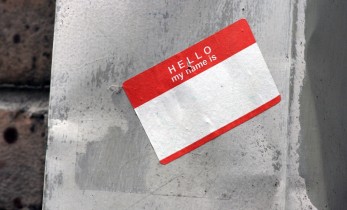Greater than 3 minutes, my friend!
Website localization issues Just translation is not enough
We are living in the digital era. Internet and World Wide Web technologies are developing incredibly fast and are involving more and more people every day. According to the stats on http://www.internetlivestats.com/internet-users, in 2016 the number of Internet users ascended to almost 3.5 billion people, which is 46.1% of the world population. Almost a half!
So it´s logical that every company considers its online presence very important. The corporate website forms a significant part of the corporate image, apart from social media presence and other types of corporate communication online. All this becomes even more important if the company is international and wants to attract clients from all over the world. Website is a company´s face in the online world. How to make it successful and effective on the international level?
All the websites for the international audience should consider localization to each target language. What is localization and is it different from simple translation? This difference is clearly stated in one of the publications on the Lionbridge site (http://content.lionbridge.com/the-difference-between-translation-and-localization-for-multilingual-website-projects-definitions):
- Website translation is the process of changing an original (source) language version of web content such as text, multimedia, ebooks, or apps into a different (target) language by simply substituting words from one language to another — in context.
- Website localization is a more specialized process of adapting your web content and applications for regional — or local — It goes beyond translation to modify the source language and other site elements to appeal to the customer’s cultural preferences in their own target language.
The localization goes beyond the translation. Localizing a website means adapting it totally to the target audience, considering all linguistic, cultural and other particularities. It means that not only the text, but all the website content should be localized, such as graphics, telephone numbers, entry forms, time and date, etc. Besides, though this is more for website creators than for localizers, it´s necessary to consider the colors and the visual image of the site. For example, it is widely known that in the Asian culture, multicolored environments are preferable, while the European users vote for sobriety.
The gateway is the other important feature. What is gateway? It´s a link that allows the user to access other localized versions of the website. Usually this is a visual or textual element on the home page. In his book The Art of the Global Gateway John Yunker explains how to make your gateway user-friendly and easy to find.
The best place for the gateway symbol or text is the upper right corner of the page. If you put your gateway in the bottom of the page, nobody will find it. Unfortunately, not many companies think about it while designing their websites. Try to enter some international websites and search for the gateway. Sometimes it is extremely difficult to see.

Example of well-positioned gateway on H&M website.
The other important issue is the visual image: whether to choose a flag or a language abbreviation, is it better to show the list on the same page or on a separate one, scrolling down or flash window, all of these are the aspects to consider during your website localization. John Yunker gives really useful advice regarding this point.
The degree of localization is also important. Depending on the company´s strategy on one or another country, the amount of localization can be chosen. According to Singh and Perreira (The Culturally Customized Web Site: Customizing Web Sites for the Global Marketplace), the websites can be standard, semi-localized, localized, highly localized and culturally adapted. The cultural adaptation is the highest degree of localization and nowadays there are very few if any websites of this type. In general the companies choose semi-localized or localized versions, sometimes highly localized, which means considering specific information for each country, such as time and date, postal codes, number formats, etc. It always depends on the importance of the particular market for the company.

Example of semi-localized content for Spain on Tiffany´s website.
The other interesting thing is the type of content to localize. Almost any type of text can be used depending on the company´s activity: technical, IT, fashion, cooking, and tourism, just everything!
So usually, the translators who work on website localization should have not only the experience in website localization and understand all the technical aspects of this process, but also be experts in the particular area the site is dedicated to. The companies search for these additional skills and knowledge.
In conclusion, if a company wants to be successful on the international level, well-localized website is a must. It constitutes the corporate image in other countries, it directly interacts with the users and it reflects what the company is and what it represents. Therefore, the quality of the website localization is extremely important. And this circle completes on us, translators and localizers! It is our job finally to deliver an attractive and structured product from the linguistic point of view.
I think, it is important to remember, that just translation is not enough here. Localization is much more complex and extended process, but it is equally fun!




